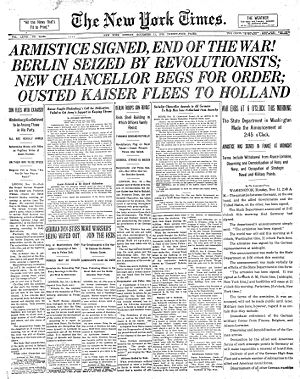
- Image via Wikipedia
We’ve been in the midst of a free trial of the New York Times on the Amazon Kindle platform. We’ve looked at it both on the Amazon Kindle App for Android and on the Kindle itself. And it falls flat. But don’t take our word for it. The New York Times is the number 1 selling newspaper on the platform, and is offered at $19.99 a month. After the introductory offer of $5.70 a week, delivery of the actual Times is $11.70 a week in our neighborhood here in New York City.
If you explain the reduction in cost as being due to no printing or distribution costs, then this should be a phenomenal deal. But it is severely lacking. Many sections and features are missing from the Kindle edition. But you don’t have to take our word for it. Kevin C. Tofel, who is the mobile site editor for GigaOm, when we were complaining about this on Twitter, commented, “yup, after reading today’s NYT for Kindle on the plane home, I agree. More like a local web version than an ebook newspaper.”
Reading the Amazon reviews of the product, you see many people complaining about being unwilling to pay this price for partial news, and missing sections. Why would anyone pay $20 a month to get less than they can get on the New York Times website for free? Where is the value-added product? It is why, like many, we have no plans to continue our subscription past the free trial. Why is the New York Times putting out an inferior version of their product? There were similar complaints in other of the top papers and magazines. Missing content was the biggest complaint.
Most customers want a e-version of their newspaper to be a reproduction of the paper experience and to be formatted the same across multiple platforms(to the best extent possible). We can use the website, but the point of downloading a complete file is that we get everything without the need for constant connection. These issues are not limited to one platform.
Electronic subscriptions are up, but overall, subscriptions are down. If print media cannot put out its A game, then is it any surprise if it fails to succeed in paid digital subscriptions, and ultimately at preserving its relevance in a connected world.
Someone give us a top-quality electronic newspaper or magazine, or even just top quality online content packaged for our use. Give us something worth paying for, and people will pay for it. Not everyone, but those people unwilling to pay for content are not the target audience for newspapers or magazines.
What do you think?
Related articles
- Print’s latest savior: Amazon’s new Kindle revenue split (zdnet.com)
- Five Things That Will Keep Shaping The Web in 2011 (sixrevisions.com)
- Print vs. Web Media: What Are the Real Differences? (brighthub.com)
- News on iPad Eats Away at Print Media, Survey Says (pcworld.com)

